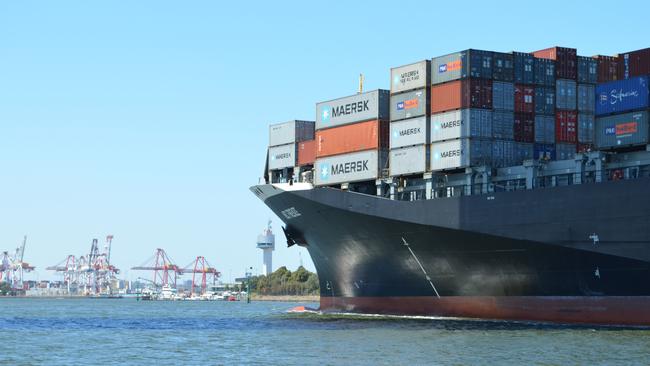
But the global hunger for yield is so great that it is forcing both institutional groups and individual investors to take greater risks.
And when the New South Wales electricity grid (Ausgrid) is put up for tender, if the top bidder again pays a peak price then that “winner” will be taking even greater risks than the Port of Melbourne “winner”.
Let me explain the long-term risks involved in both the Port of Melbourne and Ausgrid tenders.
The first risk applies to all infrastructure assets and affects both Ausgrid and the Melbourne Port. If there is a rise in world interest rates then the value of these infrastructure assets will decline. There are clear signs the US government is set to edge up rates and that has already reduced the price of listed Australian infrastructure like Sydney Airport and Transurban. Those paying these high prices for long-term infrastructure are betting that while there might be small US rate rises, low global interest rates are with us for decades.
But both the Port of Melbourne and Ausgrid have specific long-term dangers, which compound the interest rate risk.
On the adjoining bay in Victoria, Western Port, there is a deep water harbour site that is one of the best in the world, with land already reserved for a world class rail/road access line. The previous Victorian government looked closely at developing Hastings as a world-class, low cost port and developers were prepared to invest the large sums required. Knowing this, the coalition used their numbers in the state upper house to restrict exclusivity in the current tender to 15 years.
The current Port of Melbourne is an excellent facility but it is union-dominated. If in the years ahead the size of the container ships becomes a lot larger there may be difficulties in enabling them to sail through the heads of Port Phillip Bay without further deep water dredging — a difficult task. You’ll see in the comments below that “David” believes that the Port Philip heads will be able to manage larger container ships, but the problem is that the current port is not large enough to enable the big 400m container ships to manouvere. The risk is the same.
The movement towards automated ports that eliminate bad union-driven work practices may make the Melbourne port too costly and force goods to be unloaded in Sydney or other ports.
The now mothballed internationally financed plan for Hastings would have created one of the lowest-cost automated ports in the world, well able to take ships of great size.
As Stephen Bartholomeusz explains, the Port of Melbourne has both spare capacity and the ability to increase its size at a low marginal cost, so that provides a defence against a new Western Port development once the Hastings embargo is lifted in 15 years.
Bartholomeusz is right and the bidders pitched their bid to price in that spare capacity.
But 15 years is not a long time in a 50-year lease so there must be a risk that port automation and larger ships will cause one of the world’s greatest undeveloped port sites (Hastings) to be looked at again. Quite obviously the winning consortium, which includes Australia’s Future Fund, believes the risk is worth taking and they may be right.
In the case of the New South Wales power grid, while the risks are totally different there is a similarity — the possibility of rival infrastructure.
All of our major power grids in Australia are based on centralised models where power is transported from central locations to the customer. But increasingly, customers are seeking to develop their own power source — usually via solar — and want to export some of their power to grids that were not designed for two-way movement.
The cost of providing a vast number of decentralised solar installations currently looks prohibitive but the economics would change dramatically if low-cost batteries were developed so that power could be generated in homes and factories during daylight hours and economically stored for use at night or at other times.
On the other hand, power from the grid could also be accessed during non-peak times and stored in the batteries, which would improve the economics of the grid.
The New South Wales government is pushing for wind development because it feeds into the grid. Although vast strides have been made in battery development and solar generation costs more is required for greater localised usage to sweep the world in the next few years.
But in 10 years there is a real chance that the combination of low-cost localised solar and batteries become bad news for those who have paid enormous yield driven prices to own power grids.
In the case of the Port of Melbourne, groups like the Future Fund, the Ontario superannuation fund and QIC have long term-indexed commitments to fund pension plans. And the Chinese want to invest in Australian infrastructure.
In the case of the Future Fund they have the task of funding a small portion of the shortfall on the public service defined benefit superannuation scheme that provides a lifetime indexed pension to public servants and their spouses. At the moment the Future Fund is cashed up and clearly the low returns it is gaining from cash are not matching the enormous federal government annual pension cost increases.
It is worth remembering that back in the late 1990s Victoria sold off its power grid and generation capacity at what were then huge prices. Many of those that bought the assets did not do well because they underestimated the risks involved.
The buyers of the Port of Melbourne and the New South Wales electricity asset will be hoping they will not be caught he same way.








The consortium that bought a 50-year lease on the Port of Melbourne for almost $10 billion has taken considerable risks.